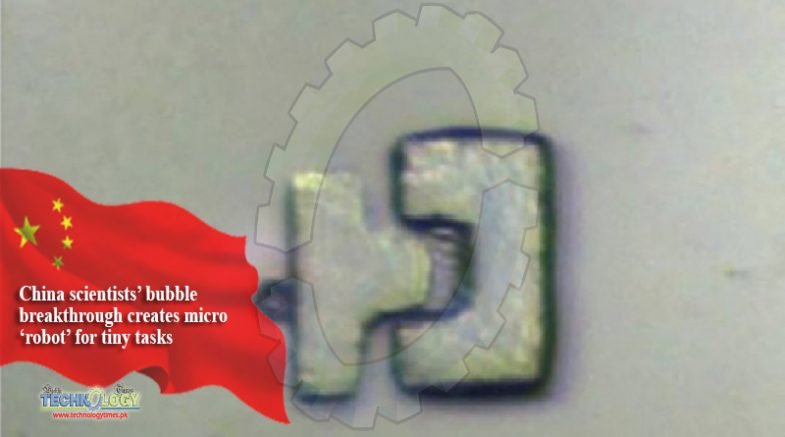Chinese researchers have created a “bubble bot” which can be directed by a laser to perform intricate microscopic tasks, including fitting together different shapes of artificial tissue, like a jigsaw puzzle.

The intricate work of modifying cells in a laboratory may become easier – and more affordable – thanks to technology developed by a research team in China.
According to a paper published in the scientific journal Small, the team at the State Key Laboratory of Robotics in Shenyang, in the northeast province of Liaoning, has effectively turned a gas bubble in water into a robot which can operate on the tiniest scale with unprecedented accuracy.
The team, led by Dai Liquo, created the bubble bot with a precisely controlled laser beam. The bubble, just a few micrometers wide, was able to perform a wide range of tasks in a water-rich environment, such as fabricating artificial tissue over a test tray or modifying an embryo.“The micro-bubble robot … can be useful for tissue transplants, regenerative medicine, and biological research,” the researchers said in the paper.
The development aims to address the challenge of handling extremely small objects in the laboratory, which is usually accomplished with a needle, handled by technicians with years of training, working for long hours under a microscope.
Even in the most experienced hands, samples are often damaged in the process. The lack of efficient tools is one of the reasons growing artificial tissue and cloning remains slow, expensive and prone to failure. Typically, fewer than 10 per cent of cloned organisms survive.
The scientists hope their bubble bot may eventually overcome these limitations but at this stage it remains a tricky operation, requiring a perfect combination of temperature, timing and laser lens type, according to the study.
The bubble is formed by the high temperature generated by a laser, with the strength of the beam determining its size. And when the beam moves, the bubble follows.
Moving the bubble around posed another challenge for the research team, who found that it remained stable for only a few minutes, limiting the time it could be used to manipulate and assemble microstructures.
